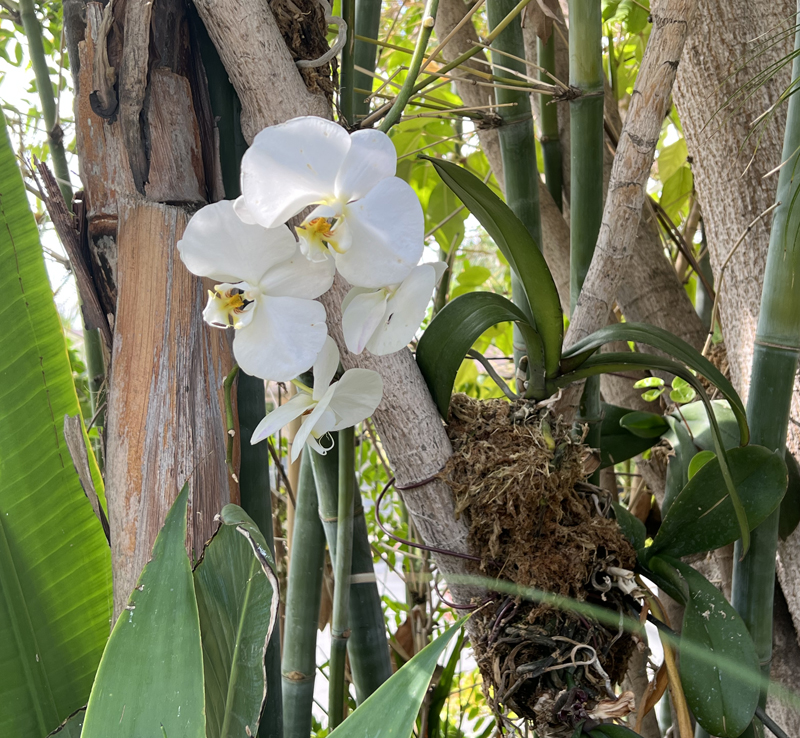
Orchids get their nutrients from the air, and often grow on trees like this one in my San Diego backyard. But their energy source like all plants comes from photosynthesis. They’re flourishing! Photo: Jim Mumford
In my spare time, I read science articles. Doesn’t everyone?
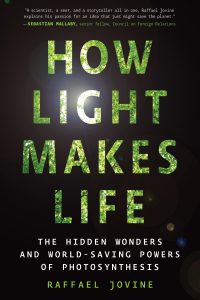
“How Light Makes Life” makes the magic of photosynthesis exciting.
In this case, the headline got my attention: “Plants aren’t good at photosynthesis. We can do it better.”
This didn’t make sense to me. The reason plants grow and thrive is photosynthesis. It’s life and death for plants. The article was
written by Dr. Raffael Jovine, a scientist who is the author of the new book “How Light Makes Life: The Hidden Wonders and World-Saving Powers of Photosynthesis.”
I read more and thankfully, Dr. Jovine isn’t a hater. Far from it. His book explores how photosynthesis was first discovered and understood by humans, how it works, our planet’s reliance on photosynthesis for nearly all life, the economic value of photosynthesis, and how we can use photosynthesis and plants to save our environment and solve many other complex problems like hunger, healthcare, and equity.
Now we’re talking.
Why Photosynthesis Can Fight Global Warming
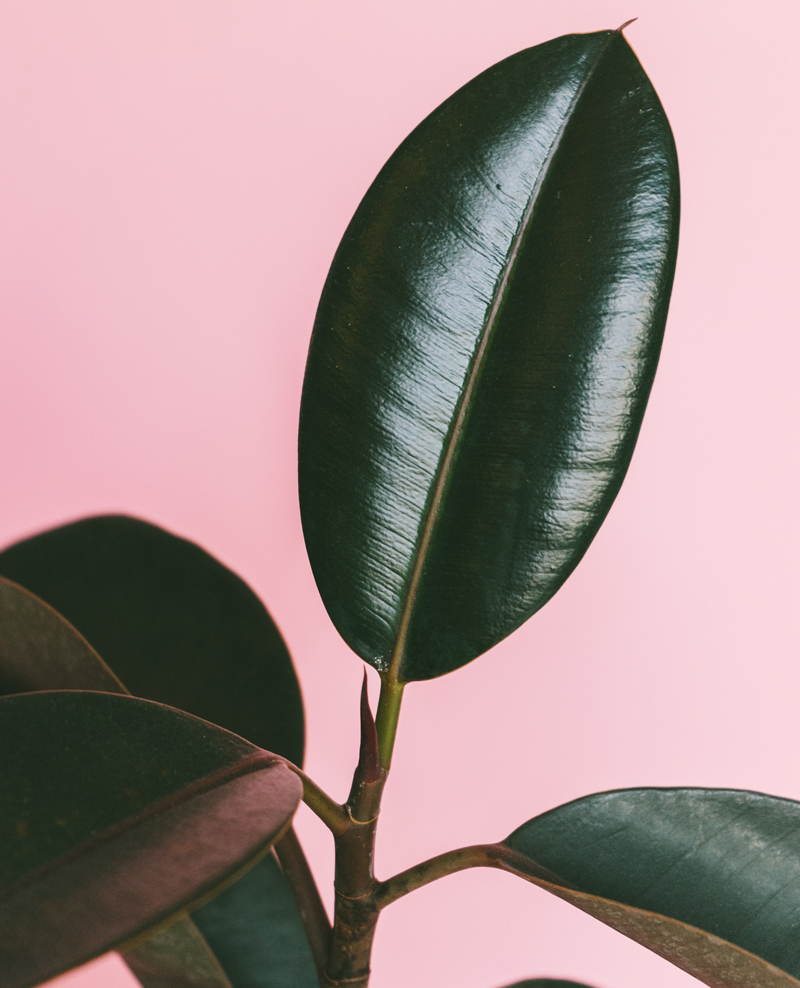
All plants convert carbon dioxide, water, and nutrients into fuel and oxygen to live. This is photosynthesis. Photo: Scott Webb
Photosynthesis is defined by Dr. Jovine this way: “The process by which biological organisms capture light energy to combine simple environmental chemicals like water and gases and convert them into useful and more complex compounds that fuel growth, reproduction, movement, and almost all life on this planet.”
Human being originally imagined plants consume or “eat” dirt for fuel, a lot like people eat food. Truthfully there are still people today who think this must be true, at least partly. It does make sense, especially because we then turn to plants for food: fruits, nuts, grains, berries, and leaves.
A Belgian scientist in the early 1600s did an experiment to prove this. He planted a willow tree in a pot filled with 200 pounds of soil. Five years later, the tree had “gained” 169 pounds. The soil only weighed two ounces less. He realized plants consume water, not soil. What he didn’t realize was the role of light and also carbon dioxide. It took another 100 years for British scientist Stephen Hales to figure it out. FYI, Hales also invented the first way to measure blood pressure.
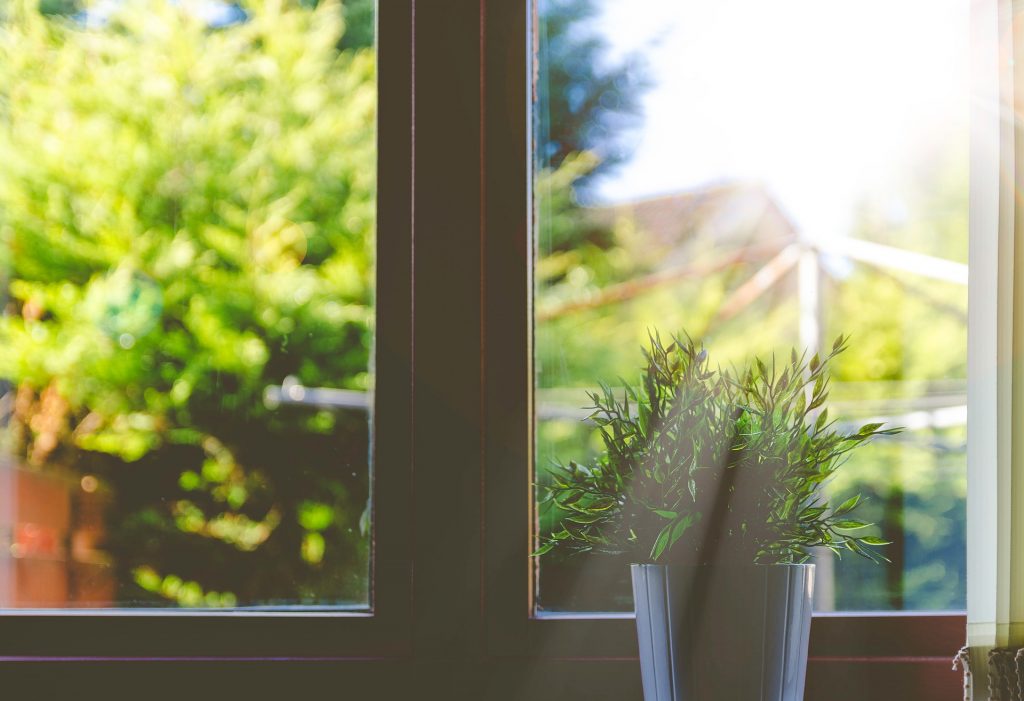
Plants convert less than one percent of sunlight into chemical energy. Photo: Stock Snap
Just in the last century, we learned photosynthesis also takes place in plants living in our oceans, and even the tiniest one-cell organisms. Now that scientists know what it is, they’ve realized the critical importance of photosynthesis capturing harmful carbon dioxide and converting it into oxygen and into energy. But plants aren’t very efficient about this process. Plants convert less than one percent of sunlight into chemical energy. Human beings have made crop plants (things like corn, wheat, cotton, tomatoes) more efficient – but only double to about two percent.
Algae are more efficient. They can convert six percent of sunlight to energy. The latest photovoltaic cells used in solar panels operate at about the same six percent energy conversion rate.
So as Dr. Jovine points out, there’s a lot of room for improvement. The race is on for scientists to figure out how to make artificial photosynthesis that works at a higher efficiency rate. The clock is ticking to find a way to fight global warming. Photosynthesis could help.
We Can’t Improve on Evolution, So Let’s Use It!
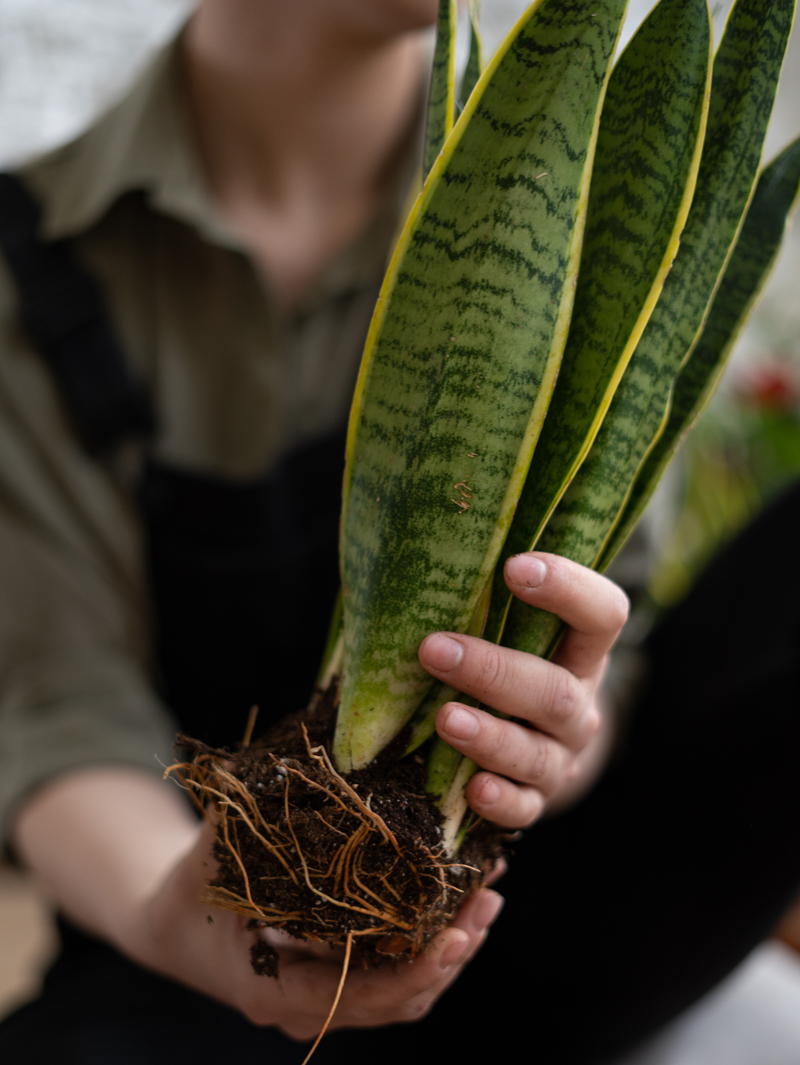
We can put photosynthesis to good use. Plants might not be as efficient as we like, but they are still by far the best carbon-capture technology we have. Let’s put plants to work. Photo: Cottonbro
But it’s hard to improve on billions of years of evolution. Not impossible. If we don’t figure out a way to stop climate change, we are going to cook ourselves to death. So we better try every possible solution. For anyone with kids, their future in a world their elders have messed up is something that keeps you up at night.
But there IS something we can all do right now. We can put photosynthesis to good use. Plants might not be as efficient as we like, but they are still by far the best carbon-capture technology we have. Let’s put plants to work.
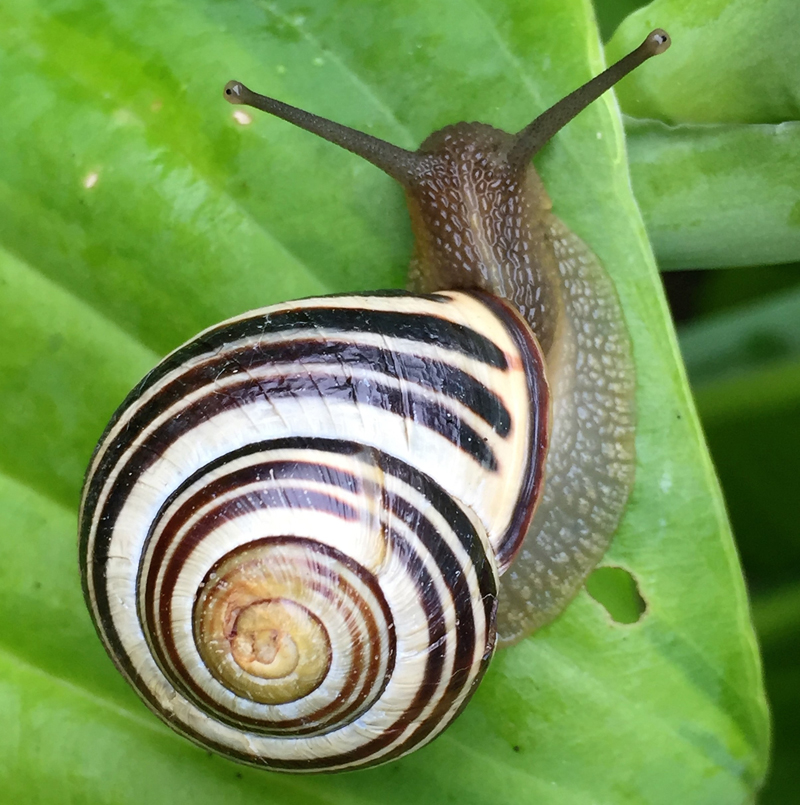
Plants capture carbon, use it to grow and multiply, and provide food for all ecosystems. Other living things use plants for protection, tools, and homes. Photo: Pixabay
Plants have evolved to grow nearly everywhere on Earth, even under the Antarctic ice. They grow on rocks, in forests, oceans, and in our fields, homes, yards, greenhouses, green roofs, living walls, and in the cute container on your table. They can adapt to changes in environmental conditions. Plants capture carbon, use it to grow and multiply, and provide food for all ecosystems. Other living things use plants for protection, tools, and homes.
As I often tell people, plants WANT to live. When we give them too little or too much water, they will drop a few leaves to save the rest of the plant. They will slow down their growth with too little light, waiting for better conditions.
Maybe science will eventually find the solution to global warming and I hope smarter people than me will keep trying. But we can do something really simple today. Grow plants. All societies know how to grow plants that will thrive in their environment. We don’t have to wait for a breakthrough. Plants can save the planet.
More Plants For a Healthier Planet – Good Earth Plant Company Is Doing Our Part
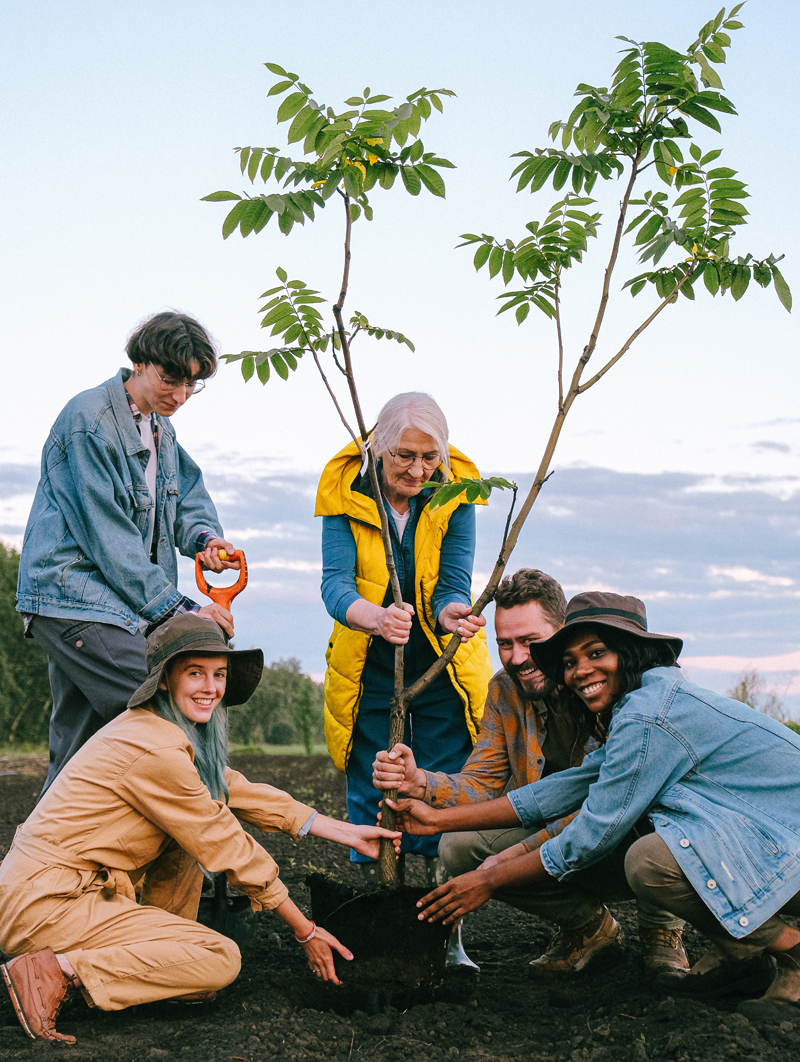
Get busy, Eco-Warriors. Plants can save the world. We just have to lend a hand. Photo: Anna Shvets
So get busy, global warming warriors! It’s as easy as joining efforts to plant more trees. Yes, a lot more trees. Resist the temptation to replace your lawn in the drought with pavers or artificial turf. Create a yard full of native plants that don’t use too much water. Put out plants in containers on your patios and balconies.
Good Earth Plant Company is using its skills and experience to contribute solutions on a bigger scale wherever we can. We’d love to put a green roof on every building in San Diego. And then every building in Southern California!
We’ve also pointed out in a previous blog that the presence of plants improves the production efficiency of solar panels. Research shows solar panels will create up to 16% more energy when surrounded by a green roof.
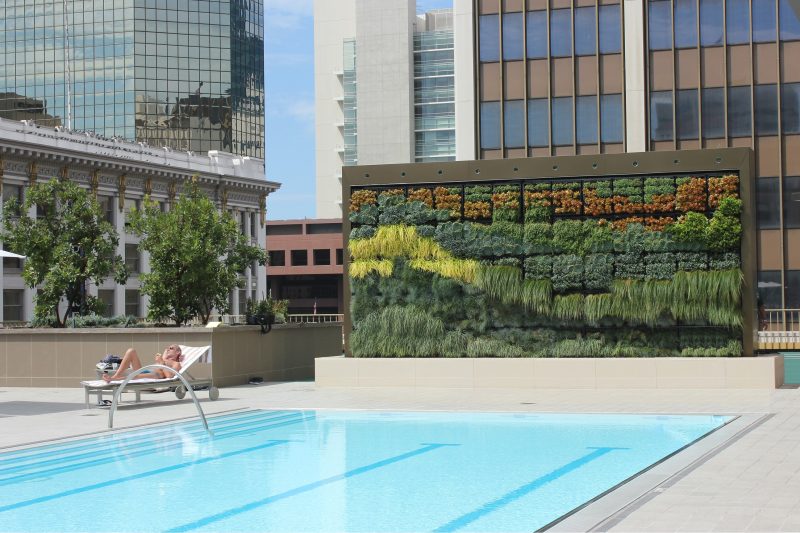
It’s good to know our outdoor living walls are fighting climate change, like this one on the roof of the Westgate Hotel inn San Diego.
Where living walls are feasible, they’re a beautiful way to fight climate change. We also love to add container plants to gathering spaces at businesses, restaurants, hotels, stores, airports, and homes.
Science must help. And we must start shutting down the power plants and billions of cars burning fossil fuels soon. But let’s not wait. Do your part, and we will keep working hard at Good Earth Plant Company to do ours. If you’d like our help, contact us at dan@goodearthplants.com or 858-576-9300. Let’s get growing and enrich our lives and our world with plants!
PS – If you didn’t blow all your money already on Prime Day, buy Dr.Jovine’s book and get inspired.
